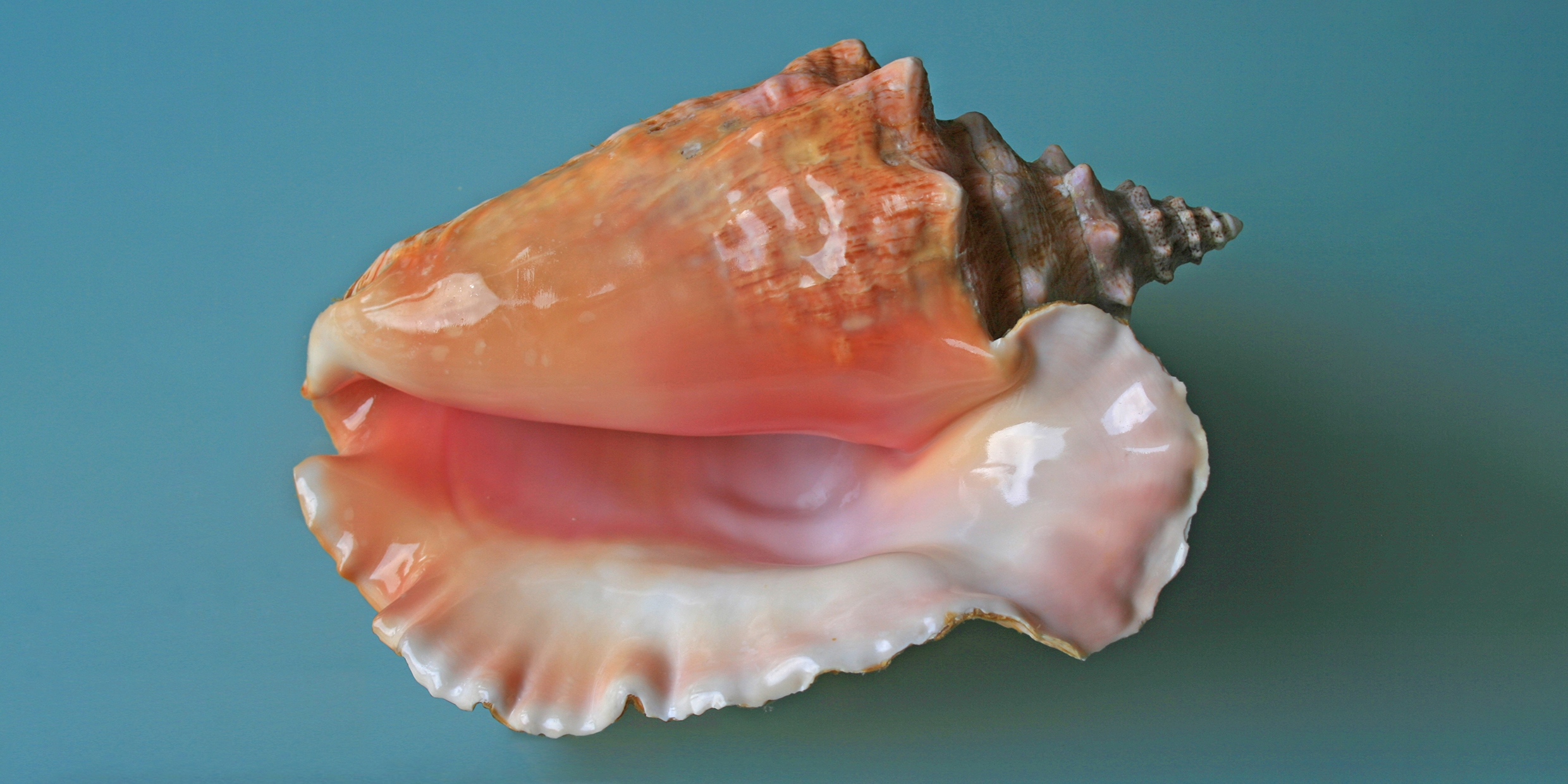Originally published 27 March 2001
EXUMA, Bahamas — Have you ever seen a pair of Queen Conchs making love? Neither have I.
But I’ve seen pictures. It’s like two Sherman tanks exchanging a kiss. No sweet nothings, no tender trap. Just one massively armored snail having a go at impregnating another.
And a good thing, too, given the rate at which Bahamians devour the flesh. Along with peas-and-rice, conch (pronounced “konk”) is the national food. Cracked conch. Conch fritters. Conch salad. Conch chowder. Conch burgers. There’s no end to the way Bahamians wolf down these creatures. Next to every pier and dock in the islands, there’s a pile of discarded conch shells so big that it constitutes a hazard to navigation.
To eat and enjoy conch, it’s best not to watch the animal being extracted from its shell. The process involves operations called “knocking,” “jooking,” and “slopping,” with an emphasis on the slop. What you end up eating is the rubbery “foot” of the conch, but there’s lots of other straggly bits that look considerably less appetizing. I’ve heard it said that a conch’s eyes are “intelligent;” well, pardon me, but upon seeing a mess of conch eyes looking up from the slopping table, high IQ is not exactly what comes to mind.
Nevertheless, so voraciously do Bahamians and tourists consume this most improbable of foods that the Queen Conch’s very existence in these islands is threatened. Good thing then that conchs are so prolific in their production of progeny.
Conchs mate nearly year-round, in shallow waters behind the reefs. Some females may spawn six or eight times a season, extruding a long gelatinous tube of as many as a half-million eggs, wound up like a banana and coated with sand. The tube can be 100 feet long, pushed out at about 5 feet per hour, the eggs fertilized as they go with stored sperm from the male. If, as the creationists say, God devised each creature as an act of independent invention, he must have had a lot of fun thinking up the conch.
Larva, called veligers, emerge from the egg case after three to five days, and begin a precarious lifelong run from predators — rays, turtles, octopi, lobsters, crabs, fish, and other snails. Of the half-million eggs in a spawn, only a few may survive to become adults. No wonder conchs are in such a hurry to produce that tank-like shell.
It is hard to imagine how an adult conch gets about, given its armored bulk and single foot — like a medieval knight so burdened with steel that he has to be lifted onto his horse by a team of panting squires. The Queen Conch doesn’t glide like other snails, but lurches from place to place, managing to travel a half-mile a month at top speed. The tiny veligers, of course, drift long distances on ocean currents, so conchs can’t really be accused of staying close to home.
After about 31⁄2 years, the lucky conch that has managed to survive reaches sexual maturity and begins the awesome task of lurching about for a mate. It has now acquired the flared and beautiful shell that makes it more or less invulnerable to every predator except loggerhead turtles and Bahamian fishermen. Evolution equipped the mature conch to live for 10 or 20 years, but evolution didn’t reckon with cruise boats full of tourists pining for the taste sensation of raw conch salad, the preparation of which by a master chopper is a spectator delight in itself.
In 1758, the great Swedish systematizer, Linnaeus, gave the Queen Conch its scientific name, Strombus gigas, which means “giant spiral shell.” It was Linnaeus more than any other person who edified the interconnectedness of life. Simply by inventing a regular way of naming creatures, he made it obvious that creaturedom is not the invention of a whimsical and arbitrary god, but rather (whatever your theology) a web of astonishing order.
Not long after Linnaeus proposed his biological nomenclature, French chemist Antoine Lavoisier set out to do the same for chemistry. In the introduction of his great book, he tells us that, whereas he sat out only to improve chemical language, his “work transformed itself by degrees, without my being able to prevent it, into a treatise upon the Elements of Chemistry.” In like manner, the scientific naming system of Linnaeus made Darwin’s epic insight inevitable.
All life is related by common descent, and hundreds of million of years ago we shared a common ancestor with Strombus gigas. Which is why our bodies are nourished by dining upon this Sherman tank of the sea, and maybe why we smile with wry appreciation when we read about or see pictures of conchs mating, one of nature’s more bizarre (in human terms) negotiations between vulnerability and desire.



